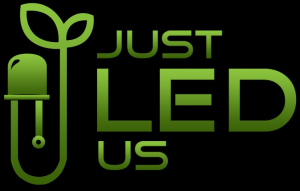Garden by Night
Garden by Night
A 100 watt unit can easily be used for a counter top herb/lettuce garden and they will run rather cool, so you can have them quite close to the plants as opposed to MH-Metal Halide or HPS-High Pressure Sodium grow lights which can create heat stress and a multitude of problems and if placed too close will burn the fruits of your labor and cost more with electricity as you will have to find other solutions to maintain your working environment or garden.
Regulate Temperature
Most house plants adapt and grow in differing climates or temperatures and generally range between 15 °C to 25 °C (60 °F to 80 °F) which is the average temperature for most homes while other plant species may require attention to control the heat and cooling of the environment as they will provide you with varying health benefits such as purifying the air that we breath.
Temperature affects the productivity and growth of a plant depending upon whether the plant type is a warm season or cool season crop. If your temperatures are high and the simulated day length is long, cool season crops such as broccoli and spinach will make themselves scarce rather than produce the desired flower. Temperatures that are too low or high for a warm season crop will prevent fruit set. Temperatures that are too high for warm season crops such as capsium/pepper or tomato can cause pollen to become in-viable and will be the likely culprit when flowers do not pollinate. Adverse temperatures also cause stunted growth and poor quality. Did you know that the bitterness in lettuce is caused by high temperatures?
Your plants will flourish when you give attention to these facts, as heat regulation is a type of attention and Love.
NASA’s Kennedy Space Center has focused specific work on the proportion of blue light required for normal plant growth as well as the optimum wavelength of red and the red/far-red ratio. With the addition of green wavelengths, research has suggested that there is improved plant growth – through visual monitoring of the plants status through various stages of growth. LED grow lights have thermal limits similarly to other solid-state lighting and can survive very high temperatures. They still require sufficient cooling to attain satisfactory maintenance and overall lifetime expectancy.
Regulate Temperature with Cross Ventilation
When you commit one of your rooms or walls in your home to a gardening area and are using one of our larger units or daisy chaining a few units for a large coverage area the temperature will rise, slightly. Anyone who says that LEDs won’t raise your room temperature is lying, physics is physics any heat that is produced by the unit is absorbed by the heat sink and dissipated by the fans in the rear of the light, leaving it in the room. As compared with older lighting technologies this is a slight rise in temperature and less of a concern, as a small fan for circulation is in order. We recommend maintaining an average room temperature of no more than 85°C/185°F in your gardening area, for not only your units but also for the integrity of your garden as well. Indeed this is the optimal temperature for many plant species. Therefore, for small to room sized urban gardens we recommend gardening by night as room temperatures are easier to regulate and your local electricity rates will be at a lower rate per kW/h, so maintaining your garden will be minimal with such associated costs.
Heaters, vents, and fans are your allies in temperature control. Vents and fans help to cool your indoor gardening area as hot air must have a way to exit, and cool air must have a way to enter. Besides vents and fans, one low-tech way to increase air movement is by installing screened windows and doors in your in your gardening room or area. By having an opening such as a window on one end and the door panel on the other, you’ll have cross-ventilation. Positioning openings at the top and bottom of the gardening area walls allows warm air to rise and escape from the upper openings or vents, and cooler air to enter through the lower ones.
Should you decide to have an open gardening area such as a vertical wall or on a smaller scale such as a counter top herb/lettuce garden air circulation will be less of a concern.
When using older technologies such MH-Metal Halide or HPS-High Pressure Sodium grow lights to garden in your home your grow room set up would cost you more as accessory ducting, inline fans (that in most cases create noise pollution) are still creating your gardening area to overheat as it will be very likely to be exceeding 85°C/185°F which is the threshold of being too hot for plant life.
Related Articles: Photoreceptors and Spectral Absorption, Keeping Your LED Light at a Proper Distance





Leave a Reply
Want to join the discussion?Feel free to contribute!